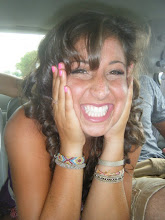OH MY GOSH!!!!! "GOOD FORM," BAFFLES ME! I HAD TO READ THIS CHAPTER ATLEAST THREE TIMES. I'M TRYING TO FIT ALL OF THE PIECES TOGETHER...THIS IS WHAT I HAVE SO FAR:
"What stories can do, I guess, is make things present. I can look at things I never looked at. I can attach faces to grief and love and pity and God. I can be brave. I can make myself feel again," (page 172).
Okay, so let me sort this out a bit. He did not, in all actuality, kill a man. However, because he saw a man dead, he felt responsible. But actually, he did not SEE the man because he did not have the courage to look, so he made up a story in which he can put a name to a face in order to cope with what happened. So, in his stories, he can be the person that he wishes he was during the accident. He can be everything he is not. This is situational irony at its best! I knew there was something special about the chapter when I was reading it because of the repetition O'Brien uses. He says that, "story-truth is truer sometimes than happening-truth," (page 171). This confuses me. Does he say that because he has convinced himself that the story-truth is what actually happened? Or, is it because that is what he wants people to believe happened? Somebody help me sort this mess out!
P.S. I love this book!!!
Thursday, August 12, 2010
Subscribe to:
Post Comments (Atom)


I think story-truth = emotional truth, as opposed to happening truth = factual truth. Sometimes the true facts don't express the true emotion.
ReplyDelete